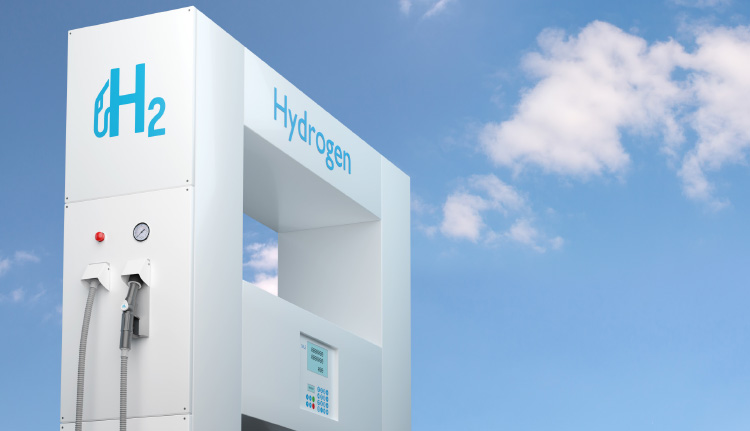The world is on a quest for cleaner energy solutions, and hydrogen is emerging as a frontrunner. Egypt, with its abundant sunshine and wind resources, is poised to become a major player in the hydrogen economy. However, integrating hydrogen into the energy system presents challenges, particularly when it comes to cost. By understanding these opportunities and hurdles, Egypt can gain a clear picture of the potential role hydrogen can play in shaping a more sustainable future for Egypt.
Development of Hydrogen Projects in Egypt
Egypt is developing its hydrogen industry, through thriving blue hydrogen and green hydrogen projects. Green hydrogen is produced by splitting water with renewable electricity and is considered a clean energy carrier with vast potential. Egypt’s 2035 Energy Strategy prioritizes green hydrogen development. The goal is to be a regional leader, focusing on green derivatives like ammonia and methanol for ship fuel, capitalizing on Egypt’s strategic location.
When it comes to green hydrogen, Egypt sees collaboration as a key catalyst. Memoranda of Understandings (MoUs) have been signed with Energy companies and firms for potential large-scale projects and for building and operating green hydrogen plants.
There’s not much public information specifically on blue hydrogen projects yet. However, Egypt has abundant natural gas reserves, which could potentially be a feedstock for future blue hydrogen production, assuming carbon capture and storage solutions are implemented effectively. This comes as blue hydrogen is produced from natural gas through a process called steam methane reforming. However, the capture and storage of the resulting carbon dioxide (CO2) emissions are crucial to make it a “blue” option.
Government Hydrogen Strategy
Egypt’s Hydrogen Strategy has two sides as Egypt is aiming to be a leader in green hydrogen production, while keeping an eye on the potential of blue hydrogen down the line. The National Green Hydrogen Council in Egypt approved the National Hydrogen Strategy in November 2023, in preparation for presentation to the Supreme Council of Energy. The strategy aims to make Egypt one of the leading countries in the green hydrogen economy in the world.
By utilizing world-leading expertise and innovations in the production and export of hydrogen, its derivatives, and promising renewable energy sources, Egypt plans to capture a share of 5-8% of the global hydrogen market by 2040. Accordingly, Egypt aims to position itself as a hydrogen frontrunner in the region.
Potential Applications of Hydrogen in Egypt
Hydrogen can have different applications in Egypt. It could be used as a means of balancing electricity through storing excess electricity produced from solar and wind, providing a reliable backup for power grids with a high dependence on renewables.
Moreover, fuel cell vehicles powered by hydrogen can offer zero-emission transportation for passenger cars and commercial trucks, reducing urban air pollution. Additionally, hydrogen-powered ships could significantly reduce emissions in the busy Suez Canal and maritime transportation in general. Egypt’s strategic location could make it a hub for green ship refueling. Towards the end of 2023, Egypt signed an MoU with the Norwegian company Scatec ASA as it aims at supplying ships with green fuel in East Port Said. This venture is expected to see investments of roughly $1.1 billion.
Moreover, hydrogen can revolutionize the industrial sector as it can replace fossil fuels leading to cleaner manufacturing practices.
Challenges in Integrating Hydrogen into the Energy System
One of the challenges facing the hydrogen projects integration in Egypt is the high cost. Minister of Electricity and Renewable Energy, Mohamed Shaker, stated in 2023 that there are a number of challenges facing green hydrogen production projects, as its production depends heavily on the price of electricity. Shaker pointed out that the cost of the electrolyzer needed to produce green hydrogen ranges from $650 to $1,000 per kilowatt in 2020, and it is expected that the cost of the electrolyzer in 2050 will reach $130 to $307 per kilowatt.
Moreover, “high initial costs, a lack of off-takers and supply chain risks pose financial and scalability challenges,” according to the according to the report entitled ‘Force Field Analysis Hydrogen Egypt’ commissioned by the Netherlands Enterprise Agency in 2023. Another challenge is the scarcity of water as green hydrogen need water to be generated.
Yet, Egypt is planning to offer hydrogen cost reducing incentives, which include a significantly reduced customs tax rate of only 2% on essential equipment imported for project construction and operation; a five-year exemption from stamp taxes; potential for partial or full government funding to connect projects to utilities; corporate tax rebates ranging from 30% to 50% of the investment value, lasting for seven years after the project begins operation; and possible partial government funding for training technical staff, according to the report.
Egypt, with its vast renewable resources, is strategically positioned to become a major player in the hydrogen economy. However, integrating hydrogen into the energy system presents hurdles, particularly around cost reduction. By addressing these challenges, Egypt can unlock the immense potential of hydrogen. This clean energy source holds the key to a more sustainable future.








